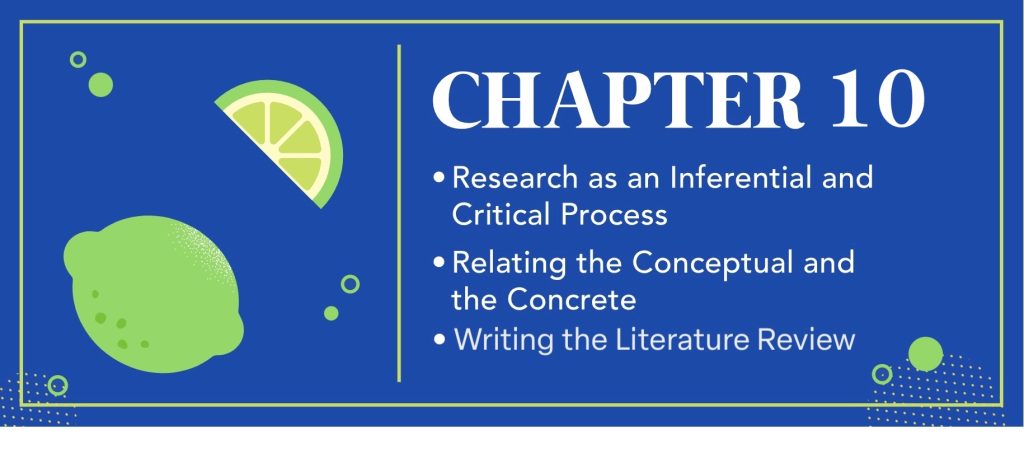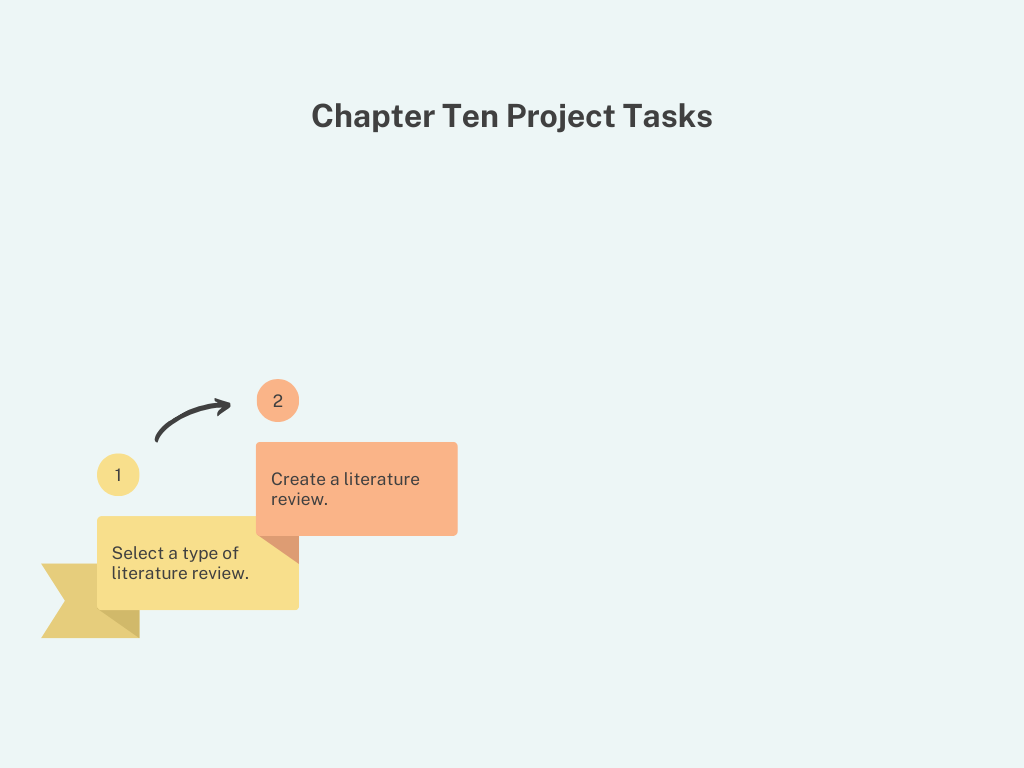Chapter 10 Objectives
Barry Mauer and John Venecek

Objectives
Much of this chapter deals with constructing cohesive arguments. In “Research as an Inferential and Critical Process,” we discuss how inferences allow us to move from one thought to another; they are the pathways by which thinking occurs.
In “Relating the Conceptual and the Concrete,” we return to our analogy between argumentative writing and law by focusing on how to use deductive logic to make your case. A good detective or lawyer alternates between the conceptual and concrete, just as you should in your research project. Deductive logic uses syllogisms, which are three-part structures that tell us what to think about a specific case (person, place, thing, group, event, etc.).
Our first task for this chapter is to select a type of literature review. We will be learning about the different kinds and why you might choose one over another. The second task is to create a literature review by synthesizing the materials we collected earlier using library and Google Scholar searches, and for which we produced an annotated bibliography.

 Learning Objectives
Learning Objectives
Keep the detective analogy in mind as you work through this chapter. Much like a detective, researchers use deductive, inductive, and abductive logic to make sense of their material. The most important lessons you will learn are to:
- ask critical questions
- note claims that follow from a given proposition (or statement of facts)
- synthesize your research into a literature review

